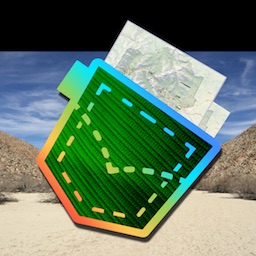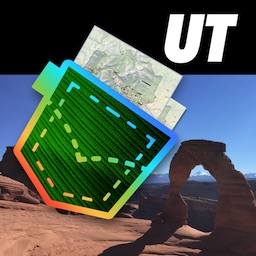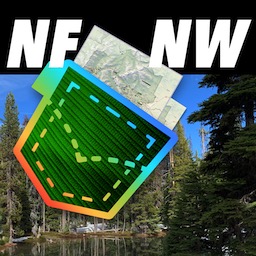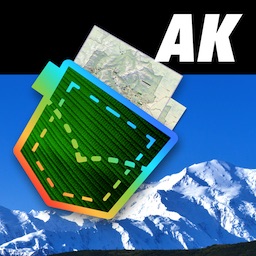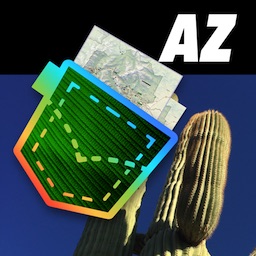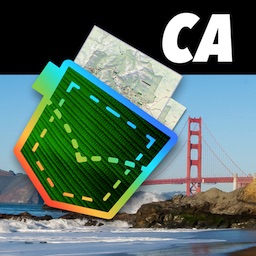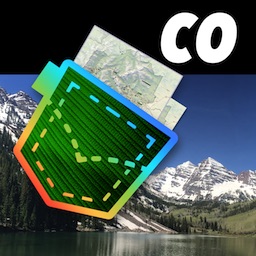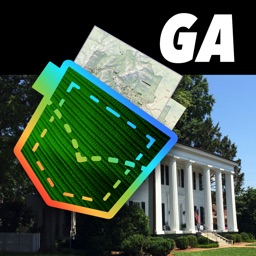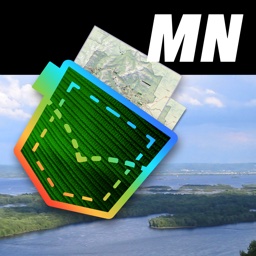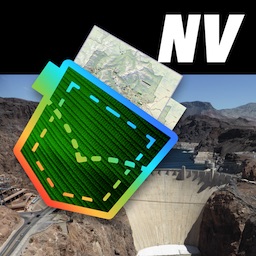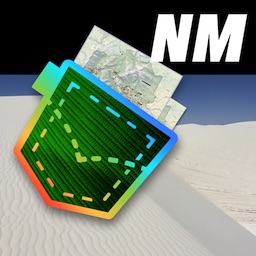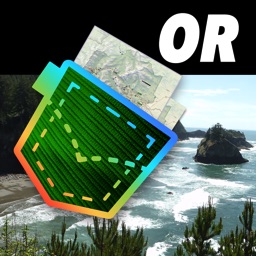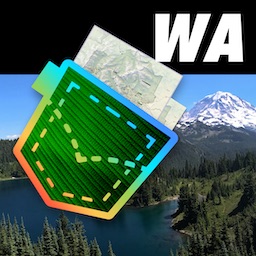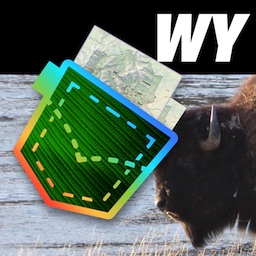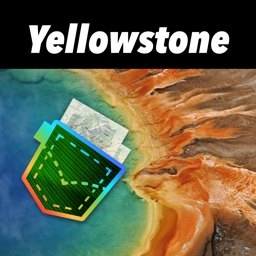by Alex Gugel , all rights reserved
 | ArchesGuide 2022 |
The official newspaper and trip planner of Arches National Park (NP) in Utah. Published by the National Park Service (NPS).
featured in
| National Parks Pocket Maps |  | |
| Utah Pocket Maps |  |
covered parks
Visitor Guide
National Park Service
U.S. Department of the Interior
Arches
You Shared, We Listened
Visitors gaze at Delicate Arch in the late afternoon.
NPS / VERONICA VERDIN
BY KAIT THOMAS
Arches is implementing a temporary, pilot timed entry system to help manage traffic in the park. From April 3 to October 3, 2022,
visitors will need to reserve a timed entry ticket before arriving. The goal isn’t to reduce visitation, but to more evenly distribute it
throughout the day, helping to create a higher-quality visitor experience at Arches.
Why Timed Entry?
During 2009 to 2019, visitation to Arches
grew over 66 percent, from 996,312 to
1,659,702 visitors per year. Most people
arrived during peak hours each day.
As a result, the park experienced
issues like roadway congestion, facility
overuse, and associated safety hazards;
overcrowding at sites and along trails;
competition for parking and other
conflicts; and loss of predictability
of visits whenever the entrance
temporarily closed until traffic abated.
These issues have negatively impacted
the quality of people’s experiences and
threaten natural and cultural resources.
Shaping the Pilot
In September 2021, the park hosted
virtual public meetings and an open
comment period to discuss potential
solutions to these challenges. After
reviewing comments from members of
the public, stakeholders, and elected
officials, the NPS determined that a
temporary timed entry pilot could help
Arches proactively pace visitation into
the park.
Timed entry reservations may better
distribute vehicles and visitors
throughout the day, providing more
reliable and enjoyable access to the
park, while also protecting Arches’
extraordinary landscape.
Welcome to Arches
Next Steps
Timed entry is only one idea on the
table. Data collected during this
temporary pilot program will help
determine timed entry’s viability as a
longer-term solution.
Visiting
Arches?
April 3–October 3, 2022
If the pilot is a success, timed entry may
become part of a larger visitor use plan
in the future.
For more information, including step-by
step instructions and frequently asked
questions, scan the QR code or visit:
go.nps.gov/ArchesTicket.
Secure your timed entry reservation
before heading into the park
Bring your park pass OR pay the
entrance fee, and show your ID
at the entrance station
Have a safe and enjoyable visit by remembering these rules and advisories.
Drink water. It is easy to become dehydrated here,
even in cold temperatures. Plan on drinking at least
1 gallon (4 L) of water per day. You can get water at
Arches Visitor Center and Devils Garden.
Walk on hard surfaces.
Stay on trails to protect fragile biological soil crusts
and plant and animal habitat, and to reduce your
risk of getting lost.
The sun is intense, and shade is rare.
Avoid exertion during peak heat (>90°F /32°C).
Protect yourself with sunscreen, sunglasses,
and a hat.
Do not rely on cell service at Arches.
Coverage varies throughout the park. There are pay
phones at the visitor center. Emergency? Call 911
Keep off the arches.
It’s prohibited—and dangerous—to climb on any
arch or on prominent features like Balanced Rock.
Pets are not allowed on trails.
Activities with pets are limited in the park. See page
2 for details on where you can bring your pet.
Respect nature.
Leave plants, rocks, and artifacts where you see
them. Do not feed or disturb animals.
Leave drones at home. Launching, landing, or
operating remotely piloted aircrafts (such as model
airplanes, quadcopters, or drones) is prohibited.
Leave the rocks as you see them.
Graffiti—carving, scratching, chalking, or any type
of marking—is illegal and unsightly.
Find your way.
Cairns (small rock piles) mark routes. Don’t build
your own; they could mislead other hikers. If you
get lost, stay where you are, and wait for rescue.
Preserve natural darkness.
Using artificial light sources to illuminate features
for photography at night is prohibited.
Do not use ATVs. It’s prohibited to use any type
of ATV or OHV. There are many roads outside the
park where you can use ATVs and OHVs.
Emergencies call 911
National Park Service
U.S. Department of the Interior
Arches National Park
Park Information
i HOURS OF OPERATION
` PETS
The park is open 365 days a year. The visitor center is open daily from 9 am
You may have your pet at Devils Garden Campground and may walk your
to 4 pm, with extended hours spring through fall. The visitor center is closed
pet along roads and in parking lots. You may not have pets on hiking trails,
December 25.
at overlooks, or anywhere in the backcountry, even in carriers. Pets must
} E W FOOD, GAS, AND LODGING
PO Box 907
Moab, UT 84532
email archinfo@nps.gov
exhaustion. Moab has kennels with boarding services. Many public lands
from the park entrance, has a full complement of restaurants, lodging,
outside the park allow pets.
www.discovermoab.com.
Visitor Guide 2022, Volume 2
− CAMPING
Arches Visitor Guide is published by
Canyonlands Natural History Association,
a nonprofit organization that assists the
National Park Service in its educational,
interpretive, and scientific programs. For
more information, see page 8.
in vehicles when temperatures are above 65°F (18°C); they can die of heat
There is no food, gas, or lodging in the park. The town of Moab, five miles
grocery stores, gas stations, and other services. For information visit
phone 435-719-2299
be on a leash no longer than six feet (1.8 m) at all times. Do not leave pets
ô ACCESSIBILITY
People with mobility impairments can access: • visitor center and toilets
throughout the park • Devils Garden Campground site 4H • Park Avenue
Devils Garden Campground has 50 sites and is located 18 miles from the
Viewpoint: Paved • Delicate Arch Viewpoint: Hard surface, level • Balanced
park entrance. The campground has two group sites for groups of 11 or
Rock Viewpoint: Paved, level • Wolfe Ranch Cabin/Rock Art Panel: Hard
more. The campground is usually full every day, March through October.
surface, level • Double Arch: Hard surface with slope; may need assistance.
We recommend reserving a site before you arrive. If you don’t have a
reservation, plan to use other area camping options. For camping outside the
For people who are deaf or have hearing loss, we have a variety of
park, ask at the visitor center, or visit www.discovermoab.com
publications at the visitor center, exhibits throughout the park, and all video
% SHARE THE ROAD
programs are captioned.
Park roads are narrow and winding. Do not stop in the roadway—save
At the visitor center, we have audio recordings, tactile models, maps, and
sightseeing for designated viewpoints. Watch for pedestrians and bicycles.
rock samples for people who are blind or have low vision. We also have
Ensure a minimum distance of 3 feet (1 m) when passing.
large print and braille publications as well as an audio version of the park
brochure. At the bookstore, you can purchase or rent an audio tour of the
Find us online.
Follow ArchesNPS to share your park
experiences with us and our growing
online community:
website nps.gov/arches
facebook.com/ArchesNPS
RESERVATIONS
park’s scenic road.
You can reserve: • timed-entry tickets for visits April 3-October 3 up to three
months in advance • standard campsites up to six months in advance,
Service animals, dogs or horses trained to perform specific tasks for a
• group campsites up to 12 months in advance • ranger-led Fiery Furnace
person with a disability, are allowed on trails. Emotional support
hikes (see below) and self-guided permits up to seven days in advance. Visit
(“therapy”) animals are not considered service animals under the Americans
www.recreation.gov or call 877-444-6777 (toll free), 877-633-6777 (TTY),
with Disabilities Act.
or +1 518-885-3639 (international).
twitter @ArchesNPS
instagram @ArchesNPS
flickr.com/ArchesNPS
Things to Do
youtube.com/ArchesNPS
Park Fees
RANGER PROGRAMS
ç HIKING
Check the visitor center or website for information on ranger programs
There are many options for hiking, ranging from a short stroll to a strenuous,
and special events. Programs are always subject to change.
multi-hour hike. Check page 4 for a list of hiking trails.
Eighty percent of the fees collected
Evening Programs May be offered most nights in summer at Devils Garden
ç BACKPACKING
at Arches are returned to the park to
Campground amphitheater. 45 minutes. Free.
Arches has only a few areas for overnight backpacking. Outside the
Arches National Park charges fees for park
entrance, camping, and some permits.
developed visitor area there are no designated trails or reliable water sources.
address priority needs in maintenance,
infrastructure, resource management, and
Fiery Furnace Hikes May be offered daily, spring through fall. Physically
To backpack at Arches, you must obtain a backpacking permit at the
visitor services. Fees are subject to change.
demanding hikes require scrambling up and through narrow cracks and
Backcountry Permit Office in Moab and camp in designated sites. Permits are
along ledges above drop-offs. Children under 5 are not permitted. Make
issued in person at the Backcountry Permit Office two miles south of Moab,
reservations on Recreation.gov. Hikes may fill weeks in advance. Tickets cost
2282 SW Resource Blvd, seven days a week, 8 am to 4 pm.
Entrance Fees
Single vehicle (per vehicle)
$30
Motorcycle (per vehicle)
$25
Pedestrian/Bicycle (per person)
$15
Interagency Annual Pass
$80
Southeast Utah Parks Pass
$55
Passes for US citizens or permanent
residents with disabilities, seniors, and
active-duty military personnel are also
available. Inquire at the entrance station or
visitor center.
$16 per person.
D FOUR-WHEEL DRIVING
â CLIMBING AND CANYONEERING
Most routes require advanced skills. Plan ahead, and be prepared for self-
Arches has a limited number of four-wheel-drive roads. ATVs/OHVs are
rescue. Follow all regulations, route closures, and group size limits. Get
prohibited. Check at the visitor center for current road conditions, especially
permits and route information on the park website. Climbing of any
after recent rain. The Bureau of Land Management (BLM) maintains many
type is prohibited on all arches and prominent features, including
popular four-wheel-drive routes outside the park.
Balanced Rock. Slacklining is always prohibited.
STARGAZING
PHOTOGRAPHY
Many overlooks with open views of the sky offer great stargazing. The
Take home great photos of your Arches experience. Here are some tips for
farther you are from Moab, the darker the sky will be. Try stargazing at
where you might capture that magic moment at both sunrise and sunset.
Panorama Point or The Windows. Read more stargazing tips on page 6.
“Light Painting,”or using artificial light sources to illuminate features
For possible stargazing programs in summer, check at the visitor center.
at night is prohibited. Stay on trails, washes, or bare rock.
Camping Fees
Nightly Fee
Devils Garden
$25 per site
* CYCLING
Early Morning Moab Fault • Three Gossips • Sheep Rock • Turret Arch
Juniper Group Site
$100-$250
Ride bicycles or e-bikes only on roads—not on hiking trails or off-road.
• Double Arch • Cache Valley • Delicate Arch Viewpoint • Wolfe Ranch
Shoulders are narrow; there are no bike lanes. There may be large vehicles
• Landscape Arch • Double O Arch
(based on group size
of up to 55 people)
Canyon Wren Group Site
(based on group size
of up to 35 people)
on the road. Ride single file. The unpaved Willow Springs Road offers an
$75-$160
enjoyable two- to three-hour ride. Most popular biking trails are on Bureau
Late Afternoon Park Avenue • La Sal Mountains Viewpoint
of Land Management (BLM) land.
• Courthouse Towers • Petrified Dunes • Balanced Rock • Garden of Eden
• The Windows • Delicate Arch • Fiery Furnace Viewpoint
• Skyline Arch • Tower Arch
2 Arches National Park
We Need Your Help
It Doesn’t Wash Away
BY RACHEL JOHA
B Y K A R E N G A R T H WA I T
Over 1.5 million people a year enjoy Arches National Park.
Each of us can play a role in protecting and preserving our
public lands. The Seven Principles of Leave No Trace are
helpful guidelines to minimize your impact anywhere you visit.
Plan Ahead and Prepare
Plan your trip activities to match your
skills, abilities, and current conditions.
Carry enough water, a map, food, and
appropriate gear on every hike. Dozens
of hikers at Delicate Arch and Devils
Garden get in trouble each year from
lack of preparation.
Minimize Campfire Impacts
Never leave a fire unattended, and
thoroughly extinguish all fires. Fires are
only allowed in designated pits at Devils
Garden Campground and in picnic
areas. Collecting wood is not allowed in
the park.
Respect Wildlife
Do not feed or chase wild animals.
Travel and Camp on Durable Surfaces
Observe them quietly from a safe
Concentrating your activity on non
distance. Secure all food and trash so
vegetated durable surfaces (e.g. a trail,
clever ravens can’t get into it. Keep pets
rock, a drainage path, or pavement)
under control and leashed at all times.
spares vegetation, sand dunes, and soil
crust from damage. Even desert puddles, Pets are not allowed at overlooks, on
trails, or in the backcountry, even
whether wet or dry, may contain living
if carried.
organisms. Walk around.
Dispose of Waste Properly
“Pack it in, pack it out.” Don’t leave
behind any trash or food scraps. In arid
climates organic litter (orange peels,
nut shells) does not decompose quickly.
“Go before you go.” Use the trailhead
bathrooms before hiking and carry a
human waste disposal bag
for emergencies.
Leave What You Find
Chalking, carving, scratching, or
painting on the rocks is considered
graffiti and is illegal. Cairns (stacks of
rocks) mark routes in the park. Don’t
change existing ones or build your own,
which can mislead other hikers.
Even though light scratching on rock
looks like sidewalk chalk, it isn’t, and
in this dry climate even chalk won’t
wash away for weeks, maybe months.
Scratches, carving, chalking, painting—
whatever the medium, it’s all vandalism.
Especially deep and extensive carvings
must be filled in with ground sandstone
and an acrylic bonding agent, and
painted with organic pigments. Treated
areas require monitoring, lest a new
graffiti garden grow in its place.
Vandalism: action involving deliberate
destruction of or damage to public or
Be Considerate of Other Visitors
private property. Years ago, marks on
Avoid disrupting natural quiet with loud rock were the only way to show the
music or shouting. Remember— you’re
world where you’ve been, but today’s
sharing this place with others. Respect
technology offers many alternatives that
and protect the quality of everyone’s
don’t cause damage.
outdoor experience.
Some Native Americans believe that
Thank You!
Arches National Park is a sacred
Practicing these principles shows your
place, and many others feel a spiritual
love for public lands and helps preserve connection to these rocky landscapes.
them for future generations.
To them, graffiti applied anywhere in the
park is a senseless and selfish act that
defaces a hallowed place.
National parks bring people from
around the world together. Why do a
few people choose vandalism as a park
experience? Regardless of the answer,
we require vigilance to combat graffiti
at Arches. We must act quickly to
discourage additional harm by
copycat offenders.
Removing graffiti leaves its own mark.
Rubbing off light scratches leaves an
unnaturally smooth surface. Deeply
incised carving requires the use of
power grinding by a skilled operator.
Share the Scenery
Since 2010, Arches’ annual visitation
has exceeded 1 million people. The
breathtaking scenery attracts people
from around the world.
•
Be flexible. There is plenty of
scenery for all to enjoy, and the
rocks aren’t going anywhere—at
least, not on a human time scale.
An Extra Note about Parking
During the busy season, you may see
rangers assisting in crowded parking
lots. Please follow their directions.
Park staff have been working to manage
traffic in the park since 2006. In 2022
we will pilot a temporary timed entry
reservation system (see page 1).
•
Carpool. Parking is very limited,
so consider leaving extra vehicles,
large RVs, or trailers at the hotel,
campground, or visitor center
parking lot.
Acceptable parking places include
individually marked stalls, parking
“lanes” along fences, and existing
turnouts along the roads. Never park on
vegetation or in a manner that blocks
traffic, and please don’t hold up the flow
of cars by waiting for a parking spot. If
there isn’t room, move to another area
and come back later.
You can use these tips to have an
enjoyable experience and to help
preserve these timeless landscapes for
others to enjoy:
NPS
We find graffiti in the park nearly every day. Don’t do it.
•
If the park is too busy, visit other
parks and public lands nearby. See
page 8 for some options.
Your involvement is crucial. Choose
to leave no trace by not marking on
rocks. Talk to friends and family about
why graffiti is not OK and report any
violations you witness.
Together, our shared care and concern
can help preserve national parks and
monuments for future generations
to enjoy.
Hey Kids—
This One’s For You!
NPS / ANDREW KUHN
Do you want to explore Arches and help
protect the park? Become a junior ranger!
Becoming a junior ranger is a serious and
important task, but it’s lots of fun too.
Ask at the visitor center how you can get
involved. You’ll earn a badge and
certificate and join
the ranks of the
many junior rangers
who help protect
this special place.
NPS / SHEENA HARPER
Arches National Park 3
Plan Your Visit
% DRIVING
ç HIKING
In 1½ hours, you can:
In two hours, you can do one of these four routes:
•
Drive to The Windows and see some of the park’s largest arches.
•
•
Drive to Delicate Arch Viewpoint and see the world’s most famous arch
•
Hike The Windows loop trail and between parking areas to Double
Arch. Drive back to Balanced Rock and walk the trail around its base.
homesteading here in the late 1800s.
•
Walk between tall fins in Devils Garden to see Landscape Arch, North
America’s longest natural stone opening.
In 3 hours:
•
Hike up the sloping slickrock to see Delicate Arch. (Avoid this trail in
midday summer heat.)
from a distance. Stop at Wolfe Ranch on your way back, and imagine
Drive the whole park road, spending 10 minutes at each viewpoint.
•
Walk to Sand Dune Arch, then across the field to Broken Arch.
Continue through the end of the campground and return. Enjoy
Tapestry Arch and the sandstone fins.
In half a day:
In half a day, take one of these two hikes:
•
•
Drive the whole park road, spending 10 minutes at each viewpoint, and
take a short walk at The Windows Section, Delicate Arch Viewpoint, or
Climb up the fins of Devils Garden Trail if you don’t mind heights.
On your way back, hike the primitive trail route only if you’re up for
Balanced Rock.
challenging slopes, exposure to heights, and narrow traverses.
•
If you don’t mind driving an unpaved road to the remote area called
Klondike Bluffs, hike the primitive trail to Tower Arch.
Hiking
TRAIL
ô Wheelchair-accessible trail
m Toilet near trailhead
7 Water near trailhead
DISTANCE
(ROUNDTRIP)
TIME
ELEVATION
CHANGE
Nature Trail
150 ft
10 min
0 ft
m
(45 m)
Balanced Rock
0.3 mi
ô m
(0.4 km)
The Windows
1 mi
m
(1.6 km)
Double Arch
at The Windows
0.6 mi
DESCRIPTION
EASY TRAILS
Learn about native desert plants on the nature trail behind Arches Visitor Center.
(0 m)
15-30 min
35 ft
This is a loop trail at the base of a fragile, picturesque rock formation. Part of the trail is paved.
(11 m)
30-60 min
15-30 min
(1 km)
99 ft
A gentle climb up a gravel trail leads to the massive North and South windows and Turret Arch. Return via the same
(30 m)
trail, or take the slightly longer primitive trail around the back of the Windows from South Window viewpoint.
30 ft
A relatively flat trail leads to the base of two giant arch spans that are joined at one end.
(10 m)
m
Delicate Arch
Viewpoints
200 ft
5-15 min
(61 m)
0 ft
You can’t hike to Delicate Arch on these trails; the hike to Delicate Arch begins at Wolfe Ranch.
(0 m)
A flat accessible trail leads to the lower viewpoint. A longer, moderately strenuous trail climbs 171 ft (52 m) across
ô m
0.5 miles (0.8 km) to the upper viewpoint, separated from Delicate Arch by a canyon.
Sand Dune Arch
0.4 mi
m
(0.6 km)
Broken Arch
1.2 mi
m
(1.9 km)
Skyline Arch
0.4 mi
15-30 min
1.8 mi
Hike through deep sand to a secluded arch tucked among sandstone fins. Do not climb or jump off the arch.
(0 m)
30-45 min
10-20 min
(0.6 km)
Landscape Arch
at Devils Garden
0 ft
59 ft
The trail crosses a large meadow to the arch. Extend the hike to 2.3 miles (3.7 km) roundtrip by hiking through the
(18 m)
arch, past Tapestry Arch, and through the campground. Part of the longer loop includes some moderate scrambling.
28 ft
A short, out-and-back hike on a flat, well-defined trail leads to an arch in a high wall.
(8 m)
30-60 min
40 ft
A hard-packed trail leads to a spectacular ribbon of rock. The trail beyond Landscape Arch becomes difficult, with rock
(12 m)
scrambling, narrow ledges, and exposure to heights—see Double O Arch.
60 ft
Park 0.5 miles (0.8 km) north of the Colorado River on US 191. A short walk across the Courthouse Wash bridge and a
(18 m)
brief climb leads to a prehistoric panel of rock markings (at the base of the cliffs, facing west).
60 min
322 ft
(98 m)
The trail descends steeply into a spectacular canyon and continues to Courthouse Towers. For a roundtrip hike,
retrace your steps along the trail rather than walking along the road. To avoid steps, start at north end.
2-3 hrs
538 ft
Take at least 2 quarts (2 L) of water per person. Avoid during midday summer heat. This trail climbs up a steep slickrock
(164 m)
slope with no shade and some exposure to heights. Just before you get to Delicate Arch, the trail follows a narrow rock
(2.9 km)
m 7
Courthouse Wash
Panel
0.8 mi
30-60 min
(1.4 km)
MODERATE TRAILS
Park Avenue
1.8 mi
(3.2 km)
DIFFICULT TRAILS
Delicate Arch
at Wolfe Ranch
3 mi
(4.8 km)
m
Tower Arch
at Klondike Bluffs
ledge for about 200 yards (183 m), which is often icy in winter.
2.6 mi
2-3 hrs
290 ft
(89 m)
The trail climbs a steep, short rock wall, cuts across a valley, and then meanders through sandstone fins and sand dunes.
An alternate, shorter trail (0.3 mile [0.5 km] one way) begins at the end of the four-wheel-drive road on the west side of
Tower Arch. This unpaved road washes out quickly in rainstorms; check road conditions before heading out.
2-3 hrs
275 ft
The trail beyond Landscape Arch climbs steeply over sandstone slabs. There are uneven surfaces and narrow ledges
(84 m)
with steep drop-offs. Spur trails lead to more arches. Dark Angel is 0.4 miles (0.6 km) beyond Double O Arch.
286 ft
Take at least 3 quarts (3 L) of water per person. Full Devils Garden trail system includes Landscape Arch, Double O Arch,
(87 m)
Dark Angel, and the primitive trail. This challenging hike involves narrow ledges, steep exposures, uneven surfaces,
(4.2 km)
m
Double O Arch
at Devils Garden
4.0 mi
(6.4 km)
m 7
Devils Garden
all trails
m 7
Fiery Furnace
(Fee Area) m
7.9 mi
(12.7 km)
3-5 hrs
rock scrambling, and few trail markers. Avoid when rock is wet or icy.
The Fiery Furnace is a labyrinth of narrow sandstone canyons that requires agility to explore. To enter the Fiery Furnace, you must accompany a ranger-guided hike
(see p. 2) or obtain a self-guided day-use permit ($10). Reserve permits and hike tickets online at www.recreation.gov. Everyone in your group must be present at the
visitor center to pick up your reserved Fiery Furnace permit.
4 Arches National Park
0
EA
1
4 Kilometers
0
GL
E
PA
R
1
4 Miles
CAUTION
Stay on trails or bare rock to
protect biological soil crusts.
These communities of tiny
organisms are critical to all
life in the desert.
North
K
ATV, UTV, and OHV
use prohibited in park
D
IL
S
G
BL
UF
F
Marching
Men
Primitive
Trail
Rough road.
High clearance,
four-wheel drive
required.
G
Pine Tree Arch
Tunnel Arch
LOST
1.7mi
2.7km
EN
Navajo Arch
Partition Arch
Landscape Arch
S
Tower
Arch
RD
YO N
A
Double O Arch
1.0mi
1.6km
C AN
SPRI
N
Dark Angel
KL
ON
DI
KE
F IN
CA N Y O N
EV
Private
Arch
Devils Garden Trailhead
Devils Garden Campground
1.4mi
2.3km
Amphitheater
Tapestry Arch
Skyline Arch
Broken Arch
S
1.0mi
1.6km
A
LT
Sand Dune Arch
7.2mi
11.5km
Soft sand in
wash crossings.
Impassable after
heavy rains.
V
5.0mi
8.1km
A
L
L
E
FIERY
FURNACE
Y
4829ft
1474m
Fiery Furnace Viewpoint
Salt Valley Overlook
9.0mi
14.5km
Delicate Arch
Rock Markings
Wolfe Ranch
To 70 and Crescent Junction
from junction of 191 and 313
18mi 29km
Upper Delicate Arch Viewpoint
Lower Delicate Arch Viewpoint
Because of soft sand on
steep grades, vehicular travel
is recommended only from
north to south through this
area. Stay on designated roads.
1.0mi
1.6km
1.2mi
1.9km
ARCHES
NATIONAL
CACHE
VA L L E Y
PARK
Panorama Point
HERDINA
PARK
2.5mi
4.0km
Eye of the Whale Arch
Soft sand.
Impassable
after heavy
rains.
0.3mi
0.5km
ATV, UTV, and OHV
use prohibited in park
WILLOW
3.8mi
6.1km
0.8mi
1.3km
F L AT S
3.2mi
5.1km
Pothole Arch
Balanced
Rock
L
WA L
G R E AT
313
SE
VE
N
Double Arch
Turret
Arch
THE
To Castle Valley from
junction of 191 and 128
16mi 26km
North Window
South Window
THE WINDOWS
SECTION
9.2mi
14.8km
N
YO
To 70 and Cisco from
junction of 191 and 128
45mi 72km
Parade of Elephants
ROCK
PINNACLES
1.9mi
3.1km
N
5653ft
1723m
2.5mi
4.0km
191
CA
Garden
of Eden Elephant Butte
128
Petrified Dunes
Viewpoint
LE
MI
PETRIFIED
DUNES
Upper Big Bend
(BLM)
Big Bend
(BLM)
6.0mi
9.6km
BI G B
END
To Dead Horse Point State Park
from junction of 313 and 191
19mi 31km
Tower of Babel
Sheep Rock
To Canyonlands National Park–
Island in the Sky from junction
of 313 and 191
21mi 34km
The Organ
4085ft
1245m
Visitor Center
Park Headquarters
OA
La Sal Mountains Viewpoint
Park Avenue
Viewpoint and Trailhead
Entrance station
B
CA
NY
Sc
ON
Unpaved road
Hiking trail
(Easy)
Restrooms
Four-wheel
drive road
Hiking trail
(Moderate)
Picnic area
Campground
Distance
indicator
Hiking trail
(Difficult)
Drinking water
Stargazing
Drinks Canyon
(BLM)
Parking
By
w
ay
Grandstaff (BLM)
Courthouse Wash
Rock Markings
5.0mi
8.0km
en
ic
128
Goose Island (BLM)
Sc
en
ic
279
To
Petroglyphs
5mi 8km
191
By
0.5mi
0.8km
M
rapids
Park Ave
COURTHOUSE
TOWERS
Park only in designated spaces.
If a parking lot is full, please
return at a later time.
Hal Canyon
(BLM)
Courthouse Towers Viewpoint
Three Gossips
Oak Grove
(BLM)
w
ay
MOAB
To Monticello
55mi 90km
To Canyonlands National
Park–The Needles
77mi 126km
Trailhead parking is limited. If parking lots are full, move on and come back later.
Park only in designated spaces.
Arches National Park 5
2022-2023 Night Sky Almanac
Stargazing Tips
Moon Phases
Look for a high viewpoint or a wide open area to see the most stars.
JULY 13 Full Moon • 28 New Moon
Try stargazing at Panorama Point or The Windows Section. Give
AUGUST 11 Full Moon • 27 New Moon
your eyes 20-30 minutes to adjust to the darkness. Skies will be
SEPTEMBER 10 Full Moon • 25 New Moon
darkest when the moon is out of sight. Use a red flashlight to protect
OCTOBER 9 Full Moon • 25 New Moon
your night vision, or just cover a white flashlight with red fabric or
cellophane. Help other stargazers by not shining your headlights or
flashlights on rock formations (prohibited). Check star charts and other
stargazing tips at the visitor center.
NOVEMBER 8 Full Moon • 23 New Moon
DECEMBER 7 Full Moon • 23 New Moon
JANUARY 6 Full Moon • 21 New Moon
FEBRUARY 5 Full Moon • 20 New Moon
MARCH 7 Full Moon • 21 New Moon
Meteor Showers
(best viewing midnight to dawn)
APRIL 5 Full Moon • 19 New Moon
AUGUST 11-12 Perseids Meteor Shower
MAY 5 Full Moon • 19 New Moon
OCTOBER 21 Orionids Meteor Shower
JUNE 3 Full Moon • 17 New Moon
NOVEMBER 17-18 Leonids Meteor Shower
Other Dates
DECEMBER 14 Geminids Meteor Shower
JUNE 21 Summer Solstice
JANUARY 3-4 Quadrantids Meteor Shower
SEPTEMBER 22 Autumnal Equinox
APRIL 21-22 Lyrids Meteor Shower
MAY 5-6 Eta Aquarids Meteor Shower
MARCH 20 Spring Equinox
Curious Behavior
From somersaulting through the air to
sliding in the snow, the behavior of
the Common Raven (Corvus corax)
is curious to say the least. These bold,
playful passerines are one of the most
common wildlife sightings in the park. If
you’re a “people-watcher” then you may
become a “raven-watcher” by the end of
your visit; these birds are remarkably like
you and me.
Like humans, ravens speak their mind.
Their sophisticated avian vocabulary
is complex with over 30 types of calls.
From the low, croak-like “kraaaah” to
the deep, nasal “brooonk,” ravens are
expressive communicators. Their vocal
repertoire includes hunger calls, defense
calls, flight calls, alarm calls, whistles,
and territorial announcements. These
loud-mouthed birds also make nonvocal sounds like wing whistling and bill
snapping. The Common Raven can also
mimic sounds from their environment
including human speech.
B Y M I C H A E L M AT T H E S
Though not as social as crows and
magpies, their close relatives, they are
often spotted with or near their mates.
“Bird brain” isn’t an insult when it comes
to the raven; they actually have large
brains and are extremely intelligent.
Cognitive processes such as imitation,
insight, and the superb ability to solve
problems truly set them apart from other
bird species. Scientists believe that ravens
memorize locations of food sources and
have observed ravens using sticks as
tools to raid other ravens’ food caches.
We humans are not the only species that
relies on retaining and recalling past
experience as we soar through life.
Ravens are opportunists and will eat
just about anything they can get their
claws on. Most of their diet consists of
carrion, lizards, bats, insects, and seeds,
but they aren’t opposed to human food as
well. These clever scoundrels have been
known to break into unsecured coolers
and vehicles for tasty yet unhealthy
human treats. In an effort to keep wildlife
wild, avoid feeding ravens by keeping
your food properly stored in a
secure location.
NPS / ANDREW KUHN
Aerial acrobatics, demonstrations of
intelligence, and providing food are key
behaviors during the courting process.
Once paired, ravens nest together for life,
usually in the same location.
6 Arches National Park
© TYLER NORDGREN
DECEMBER 21 Winter Solstice
A Microscopic Community
Biological soil crust is a living
groundcover that forms the foundation
of high desert plant life in Arches and
the surrounding area. Cyanobacteria
dominates this knobby crust, but it also
includes lichens, mosses, algae,
microfungi, and bacteria.
Cyanobacteria, previously called
blue-green algae, are one of the oldest
known life forms. Scientists think that
these organisms were among the first
colonizers of Earth’s early land masses,
and played an integral role in the
formation and stabilization of Earth’s
early soils. Extremely thick mats of these
organisms converted the planet’s original
carbon dioxide-rich atmosphere into one
rich in oxygen and capable of
sustaining life.
When wet, cyanobacteria move through
the soil and bind soil particles, forming
an intricate web of fibers. The fibers
join loose soil particles together, and an
otherwise unstable surface becomes very
resistant to both wind and water erosion.
This soil-binding action does not require
living filaments. One can still find layers
of abandoned sheaths, built up
